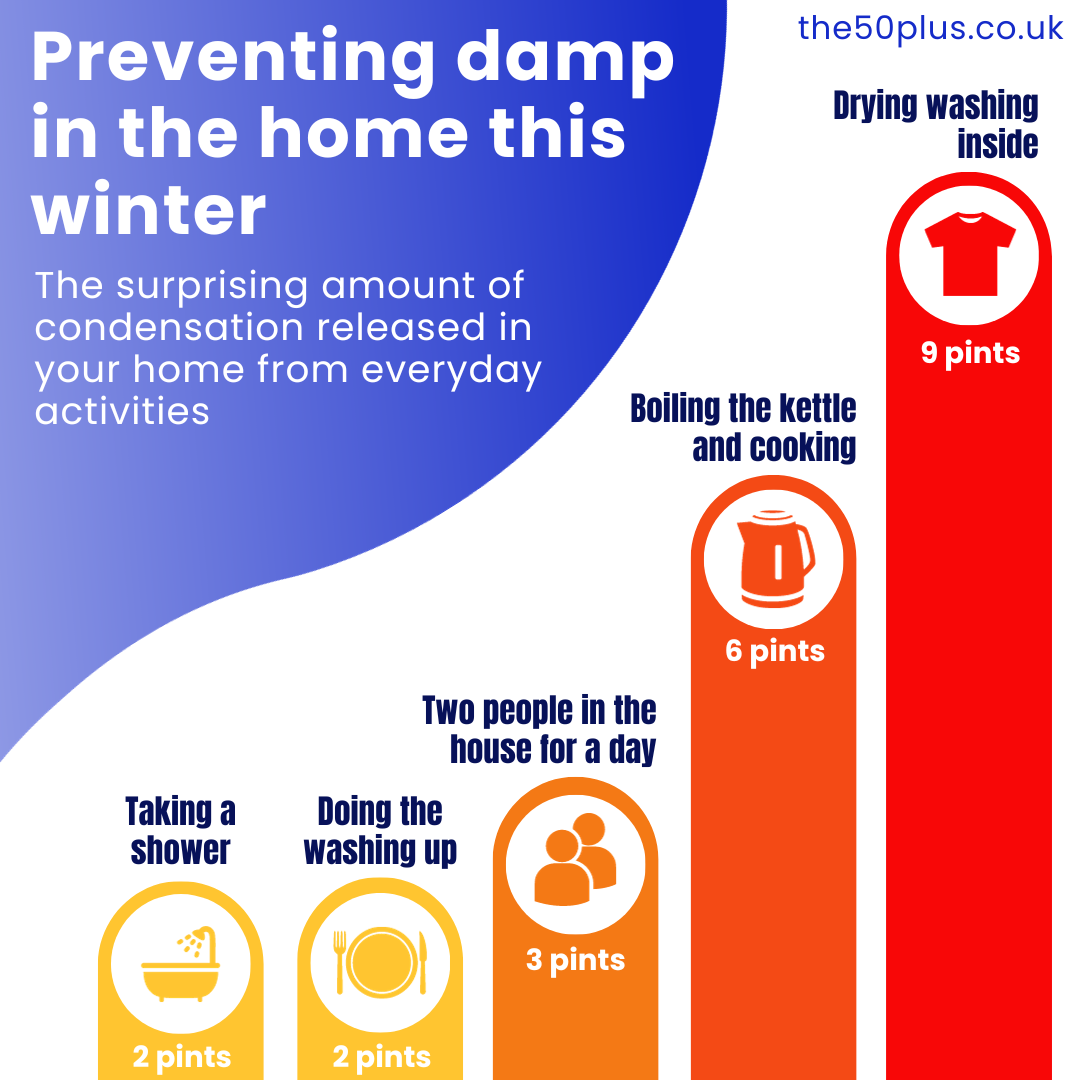Roger Runswick, director of The 50plus, explains what condensation is and the simple steps we can take to help reduce condensation in our properties.
Condensation and mould are issues that affect all of us in our homes. Everyday activities, such as cooking, cleaning, washing, and simply being at home, generate moisture. Even while sleeping, an individual adds around half a pint of water to the air overnight, and an active person contributes twice that amount during the day.
It’s this moisture that leads to condensation, which can lead to significant problems if not managed properly. While condensation isn’t the sole cause of mould, it’s one factor that we can control to minimise damage to our homes and safeguard our health. Being proactive and practical is the key.
- Ventilate:
Open windows or vents whenever possible to allow excess moisture to evaporate and prevent it from settling on surfaces. If you’re on the ground floor, open windows when someone is present in the room.
- Remove Excess Moisture:
Wipe down windows and sills frequently, ensuring the cloth is wrung out instead of drying on a radiator to avoid releasing moisture back into the air. Pay attention to areas where moisture collects around window and door frames; wipe them dry if condensation begins to form.
- Produce Less Moisture:
Cover pans when cooking to minimise moisture in the kitchen. Dry clothes outdoors when feasible; if drying indoors, do so with open windows. Ensure your tumble dryer is vented to the outside to prevent moisture from accumulating indoors.
- Heat Your Home:
Maintain a low background heat throughout the day and ensure background ventilation.
